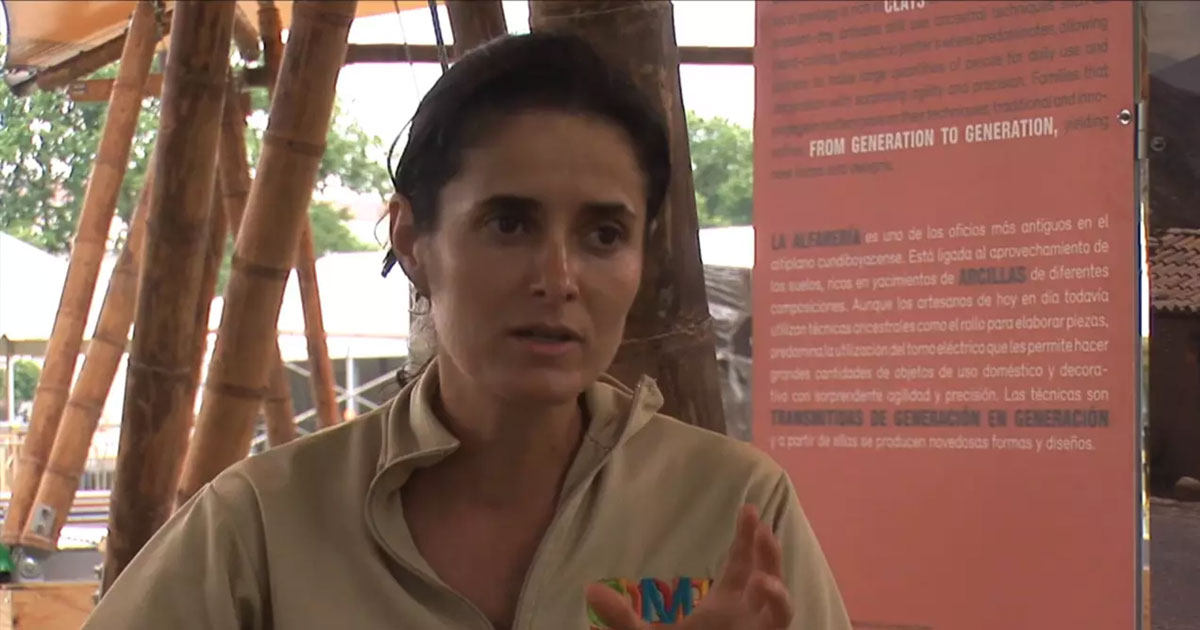Guadua (Angustifolia Kunth) is a unique species of guadua bamboo native to Colombia, Ecuador, Venezuela, and Nicaragua yet is found across the Amazon. Its name, which means ‘narrow leaf,’ is thought to be a pre-Colombian term that was originally used in Venezuela. German botanist Carl Sigismund Kunth was the first scientist to observe and write about it in the 1830s. It is sometimes called the dinosaur of plants, and because of its strength, it is also commonly referred to as “vegetable steel.” Photo by Cristina Díaz-Carrera, Ralph Rinzler Folklife Archives and Collections, Smithsonian Institution
Guadua is considered a grass. It grows rapidly in groves known as guaduales and flourishes in moist environments. In Colombia, there are regulations controlling which bamboo stalks can be harvested.The most essential factor for considering the health of a guadal is the number of its mature stalks.
Photo by Cristina Díaz-Carrera, Ralph Rinzler Folklife Archives and Collections, Smithsonian Institution
In Colombia the most abundant sources of guadua are found in the central Andean mountain range that is also home to the coffee region. It is spans across the departments of Antioquia, Cauca, Caldas, Cundinamarca, Huila, Risaralda, Tolima, and Valle de Cauca. There are four main stages of guadua growth: sprouts, juvenile, mature, and dry.
Photo by Cristina Díaz-Carrera, Ralph Rinzler Folklife Archives and Collections, Smithsonian Institution
The harvest occurs only when the stalks are mature as indicated by their whitish color and visible moss stains. The optimal time to cut guadua is during a waning moon between 3 o’clock and 5 o’clock in the morning. This ensures a minimal amount of moisture within the stalks and the absence of parasitic/damaging insects, and fungus.
Photo by Cristina Díaz-Carrera, Ralph Rinzler Folklife Archives and Collections, Smithsonian Institution
Compared to other species of bamboo, guadua angustifolia is admired for its durability, environmental and sustainable qualities, and aesthetic appeal. It is among the most valued and preferred among architects.
Photo by Cristina Díaz-Carrera, Ralph Rinzler Folklife Archives and Collections, Smithsonian Institution
After the 1999 earthquake in Armenia, several buildings made of guadua remained standing. In the years following the earthquake, elements of guadua were incorporated into several houses because its flexibility and durability.
Photo by Cristina Díaz-Carrera, Ralph Rinzler Folklife Archives and Collections, Smithsonian Institution
All of these attributes have added to guadua’s economic success on a national level and its cultural value on a local level in Colombia. As a building material, guadua is often compared to wood as being, at times, easier to work with, cheaper, and more predictable to cultivate. It is a light weight raw material that is easily transported and cost effective. It grows rapidly, and in terms of its environmental impacts, it is a highly sustainable and renewable resource.
Photo by Cristina Díaz-Carrera, Ralph Rinzler Folklife Archives and Collections, Smithsonian Institution
Several Colombians have won awards for their uses of guadua in bridges, libraries, houses, and furniture. For example, Simon Hosie Samper won the National Biennial Architecture Award in 2004 for his construction of the Casa del Pueblo Biblioteca Publica Guanacas. Shown here is one of the guadua structures Hosie designed for the 2011Colombia Folklife Festival program.
Photo by Cristina Díaz-Carrera, Ralph Rinzler Folklife Archives and Collections, Smithsonian Institution



















